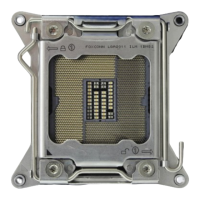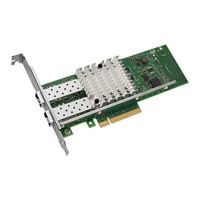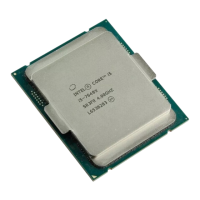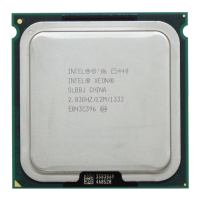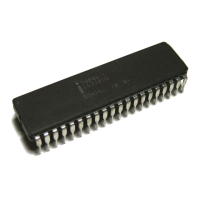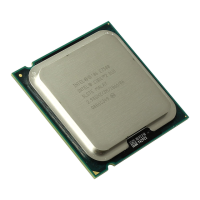Order Number: 334785-002 Intel
®
Xeon
®
Phi™ Processor x200 Product Family TMSDG
55
Quality and Reliability Requirements
A.2 Ecological Requirement
General requirements: Materials used in this product comply with Intel’s Environmental
Product Content Specification for Suppliers and Outsourced Manufacturers.
Materials should be resistant to fungal growth. Examples of non-resistant materials
include cellulose materials, animal- and vegetable-based adhesives, grease, oils, and
many hydrocarbons. Synthetic materials such as PVC formulations, certain
polyurethane compositions (for example, polyester and some polyethers), plastics
which contain organic fillers of laminating materials, paints, and varnishes also are
susceptible to fungal growth. If materials are not fungal growth resistant, then MIL-
STD-810E, Method 508.4 must be performed to determine material performance.
Cadmium should not be used in the painting or plating of the socket. CFCs and HFCs
should not be used in manufacturing the socket.
Any plastic component exceeding 25 grams must be recyclable per the European Blue
Angel recycling standards.
Supplier is responsible for complying with industry standards regarding environmental
care as well as with the specific standards required per supplier's region. More
specifically, supplier is responsible for compliance with the European regulations related
to restrictions on the use of Lead and Bromine containing flame-retardants. Legislation
varies by geography, European Union (RoHS/WEEE), China, California, and so forth.
The following definitions apply to the use of the terms lead-free, Pb-free, and
Restriction of Hazardous Substances (RoHS) compliant.
Halogen flame retardant free (HFR-Free) PCB: Current guidance for the socket
pad layout supports FR4 and HFR-Free designs. In future revisions of this document,
Intel may provide guidance on the mechanical impact to using a HFR-free laminate in
the PCB. This will be limited to workstations.
Lead-free and Pb-free: Lead has not been intentionally added, but lead may still
exist as an impurity below 1000 ppm.
RoHS compliant: Lead and other materials banned in RoHS Directive are either (1)
below all applicable substance thresholds as proposed by the EU or (2) an approved/
pending exemption applies.
Note: RoHS implementation details are not fully defined and may change.
Additional requirements: Cadmium should not be used in painting or plating. No
Quaternary salt electrolytic capacitors should be used. Examples of prohibited caps are:
United Chemi-Con* type: LXF, LXY, LXZ. No brominated plastics should be used. Also,
plastics heavier than 25 g must be labeled per ISO 10469 and may not contain
halogenated flame retardant compounds.
Chemical Restrictions:
The components must be “halogen-free,” that is, they are assembled without the
intentional use of halogen in the raw materials and these elements are not intentionally
present in the end product.
• IEC 61249-2-21
— 900 ppm maximum chlorine
— 900 ppm maximum bromine
— 1500 ppm maximum total halogens
